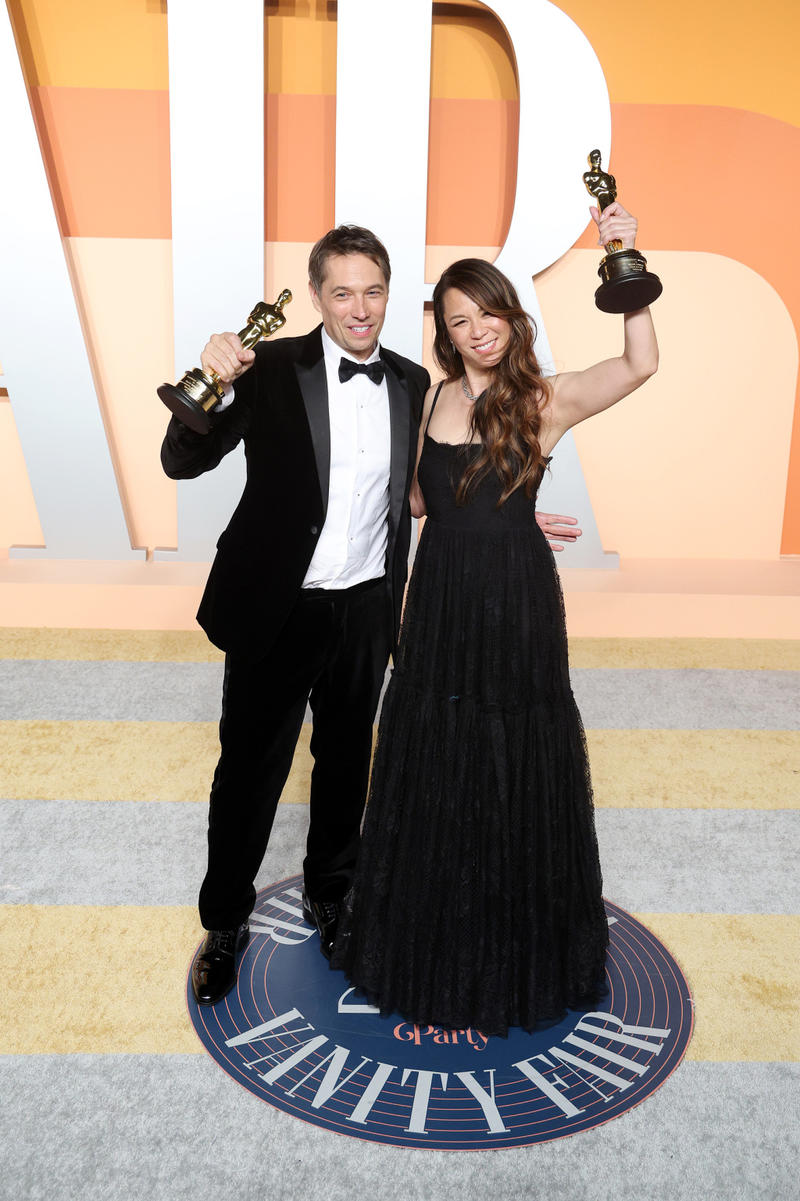
The 2025 Oscar season has come to an end, and the independent film "Anora" has the last laugh. However, its box office performance is not very ideal, and the total global box office so far is only more than 55 million US dollars. The film was distributed by Neon Films and the production cost was only 6 million US dollars. Even if Neon spent 18 million US dollars on public relations fees for it during the awards season, it should still make some profits in the end. But it seems that it is still unknown how much director Sean Baker, who has devoted three years of hard work to it, will get in the end.

"Anola," which won five Oscars, failed to bring in significant revenue for director Sean Baker.
In fact, as early as during the promotion of "Anora", Sean Baker, now 54, complained about his low income more than once, saying that independent film directors like him are basically struggling on the poverty line and can only "generate electricity with love" most of the time. What's more terrible is that the other half of independent directors is often their partners. This low income is not limited to individuals, but also includes the entire family.
Looks glamorous, but secretly can’t pay the rent
At the Independent Spirit Awards ceremony held at the end of February this year, Baker used a rhetorical question to summarize his financial account: "For filmmakers, how can you barely survive for three years with almost zero income?" He said on stage, "My answer is that the reason I can do this is because we don’t have children; otherwise, objectively speaking, this is an impossible career and life to continue."

On March 2, 2025, local time, in California, the United States, Sean Baker and his wife Samantha Kwan attended the 97th Oscars Vanity Fair party. Visual China Photo
The "we" Sean Baker mentioned refers to himself and his 49-year-old wife, Chinese-Canadian actress Samantha Quan. The two met during the filming of "Florida Project" in 2017, when the latter served as the acting coach for Bria Vinaite, the leading actress. Later, they were upgraded from partners to life partners. In "Red Rocket" and "Anola", Samantha Quan served as a co-producer and participated in the casting and theme song selection of "Anola". She also won her own Oscar when "Anola" won the Best Picture Oscar this year.
Coincidentally, another film that achieved impressive results during the awards season, "The Brutalist," cost less than $10 million to produce and currently has a global box office of only about $49 million. The 36-year-old director Brady Corbet also complained about his hardship during the film's promotion.

"Brutalist" won several awards including the Golden Globe, but because the first two films made no money, director Brady Corbett had to live on his savings.
"I've talked to many of my independent film colleagues who have been nominated for various awards this year. They seem glamorous, but in private they can barely pay their rent." In an interview with a podcast, Corbett said, "My partner and I made basically zero income after filming the two films mentioned above (referring to "Voice of the Lights," which grossed $1.44 million worldwide, and "Childhood," which grossed $240,000 worldwide), so we have had to live on our past savings in the past few years." Brady Corbett's partner, the co-screenwriter of "Brutalism," is his life partner Mona Fastow, with whom he has a daughter.

Brady Corbett (right) and his wife and creative partner Mona Fastold (left) and their daughter attended this year's Golden Globe Awards ceremony. Visual China Photo
The economic accounts of Hollywood independent art filmmakers
Recently, Alex Saks, who served as producer for Sean Baker's "The Florida Project" and "Red Rocket", was interviewed. He used a set of specific figures to reveal the economic accounts of Hollywood independent art filmmakers. He also roughly explained why independent directors like Baker and Corbett, who have already achieved success in Hollywood, may not be able to make a living.
First, Alex Sachs, who has also participated in the production of commercial films such as "Love, So Far" and "Don't Be Weird" in recent years, revealed that the investors involved in the production of Hollywood independent films now put out very little money, and the production costs basically come from equity investment. She took a film with a cost of 5 million US dollars and sold the copyright to get 7 million US dollars after filming as an example to explain how much money the creators can actually get.
Of the $7 million, the equity investor will receive $5 million of their investment plus a 20% bonus, or $1 million. At this point, $1 million is left of the $7 million. Then, the sales agent who helps sell your film will also charge a 10% fee, or $700,000. So, of the $7 million in sales, only $300,000 is left to be shared equally between the investors and the filmmakers. This means that the entire creative team can only get $150,000, which is divided between the producer, screenwriter, director, etc.
"So in a movie with a budget of $5 million, the director's income may range from $75,000 to hundreds of thousands of dollars, but hundreds of thousands of dollars will only happen to those experienced directors who have made many movies, and only they can get this level of remuneration. The remuneration of others is generally only hundreds of thousands of dollars or less than $100,000. But the problem is that it takes more than one year to make a movie. God knows how long it will take to complete. If this movie with a budget of $5 million takes three years to produce, the money the director gets may not even reach the American minimum wage standard on average," she explained.
Taking the above-mentioned movie with a budget of 5 million US dollars as an example, the director may only get 75,000 US dollars in the end, but this will cover three years of creation, preparation, shooting and post-production. Moreover, many independent directors will invest part of their remuneration in the film budget in advance to make up for the lack of various resources. Therefore, the actual money he gets is even less. Therefore, many times, independent directors have turned to Hollywood giants such as Disney to direct comic-based superhero blockbusters, which they are not good at, and they are actually forced to do so.

Sean Baker's last film, Red Rocket, cost $1.1 million to make.
In addition, Alex Sachs also emphasized that one should never think that a budget of $5 million is a small amount or unrepresentative in today's American independent film industry. In fact, the $6 million production budget of Baker's eighth feature film "Anora" is already the largest budget in his career, and this is based on the continuous success of his past few works.
People who are not familiar with the current situation of independent films in Hollywood may think that with the prevalence of streaming media, independent film directors can get an additional bonus when selling streaming rights in addition to fixed salary and possible box office share. But according to Alex Sachs, only a few independent film companies have signed fixed agreements with streaming platforms, such as A24 Films and Max Platform, Neon Films and HULU Platform have signed film sales agreements. "But other than that, it is very difficult for other independent distributors to reach streaming rights deals with platforms such as Netflix and Amazon."
"So, I completely believe what Baker said, that he was able to stick to making independent films because he had no burden of children. I believe that he was able to stick to it purely out of creative passion and willpower, and it may also be because he couldn't think of anything else to do besides making movies. In short, this is the big problem facing independent films at present: How can people who make movies survive? Whether there is an answer or not, if this continues, they really can't survive."


